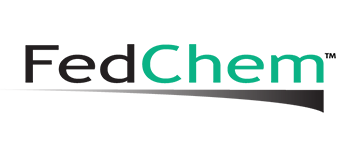Formulation
Clear AquaProof WB10™ formulation which meets meet ASTM D-4666 for exterior wood protection.
(Weight %)
20% AquaProof WB31A™
10% AquaProof WB31B™
70% Water
Ammonia to pH range 9.6 – 9.8
Procedure:
- Add the water slowly to the AquaProof WB31A with slow mixing at ambient temperatures.
- Add the metallic crosslinking agent (AquaProof WB31B) to the above mixture slowly with slow mixing.
- Using ammonia (NH4OH), raise the pH to a range of 9.6 – 9.8.
The crosslinking agent has proven to be stable in the diluted compound. The above user strength formula has survived seven weeks in a 50 °C oven without diminishing its performance properties. The pH adjustment in the formula provides an ammonia blocking mechanism which insures a long shelf life.
Additives
Surfactants and dispersants usually found in additives for water-based systems can have a detrimental effect on the water absorption properties of this system. FOR THIS REASON, WE RECOMMEND AGAINST THE ADDITION OF ANYTHING WITHOUT FIRST DETERMINING ITS EFFECT ON THE WATER ABSORPTION OR SWELL PROPERTIES OF WOOD TREATED WITH THE FORMULA. For example, the surfactants found in some pigment dispersions are quite detrimental to the swell and moisture pick up properties, since they tend to attract water rather than repel it.
Pigments
FedChem recommends a line of transparent iron oxide pigment dispersions from Evonik Industries that are compatible with the AquaProof WB10 system, specifically, the Chroma-Chem transparent iron oxide series. Usage level should be between 1% and 4% by weight of the pigment dispersion depending on the deepness of the color desired.
Resins
Resins can be used in the AquaProof WB10 formulation to provide beneficial properties such as better rub off or abrasion resistance. Care must be taken when using acrylic type resins to ensure that no residual acrylic acid remains in the polymer. We have identified two resins that provide better rub-off characteristics to the formulation. These materials can be incorporated up to a maximum ratio of approximately 10:1 resin solids to pigment solids. Rhodopas LSA-200 (Hexion): Styrene-acrylic emulsion and Carboset® CR-760 (Lubrizol): Styrene-acrylic emulsion are stable in our AquaProof WB10.
Preservatives
All of our exposure testing so far has been with the formula as shown in this bulletin, without any additives. Tests have shown that the formula does not support microorganism growth, so no preservatives should be needed in the product. No mildew problems were encountered in exposures in Bethlehem, PA, and Manchester, England. If a biocide is desired in the formulation, we recommend Polyphase 663 and Polyphase 678 (Troy). These materials can be incorporated using approximately 0.2% by weight of the biocide.
Freeze/Thaw Protection
The recommended user strength formula will be damaged by freezing unless it is protected by a small amount (0.5%) of propylene glycol. While this small amount of glycol won’t stop it from freezing solid, it protects the particle size of the emulsion.
*Please note: AquaProof WB31A (the emulsion concentrate) is not and cannot be made freeze/thaw stable, and will therefore have to be kept from freezing during transport and storage.
Defoamers
Slow speed mixing at ambient temperatures is all that is necessary for making up the formulation. High shear dispersers can be used if they are run at moderate speeds. Production equipment constraints, such as high pressure can filling equipment, may necessitate the use of a defoamer. Defoamers are usually high in surfactant content and therefore cannot be used indiscriminately in this formula. We have identified two defoamers which work in our system. They are Troykyd D-729 (Troy) and Cognis Foamaster WBA (Cognis) which at use levels below 0.5% can be used safely without diminishing water repellency effectiveness.

